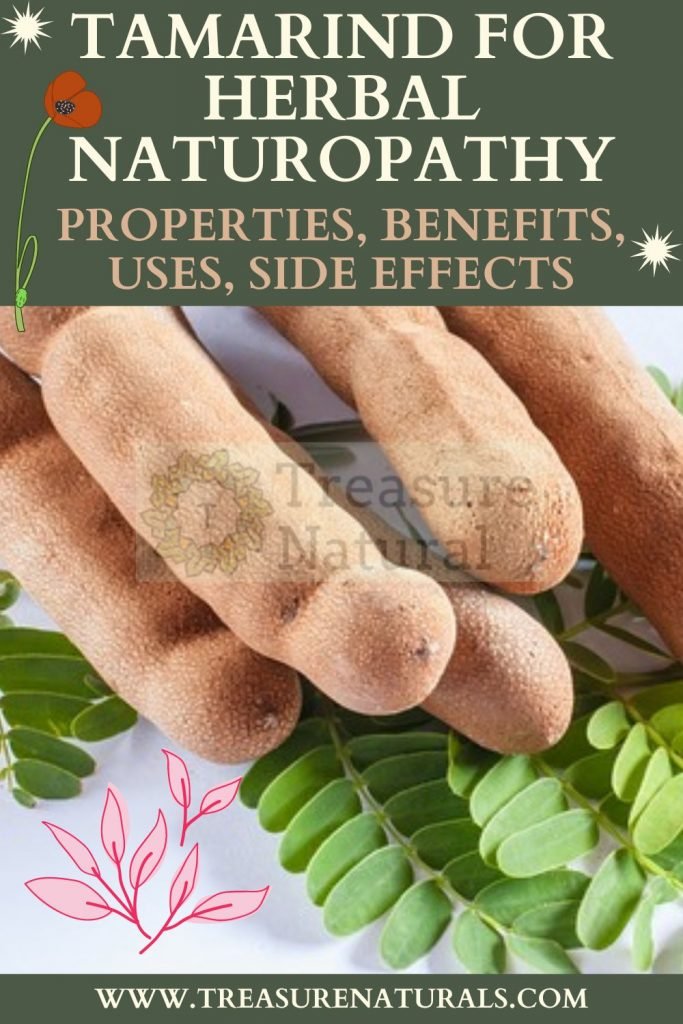
Tamarind is a natural remedy used to combat acute and chronic constipation, even in children.
The tamarind, or Indian date, is a legume with a laxative action, which is taken in the form of jam or syrup in case of constipation.
What is tamarind
The tamarind is an evergreen tree native to Africa and belonging to the Fabaceae or Leguminosae family. The botanical name is Tamarindus indica L. and, popularly, it is also called Indian date.
In herbal medicine and phytotherapy of tamarind, the pulp of the fruit and the seeds are used for their mildly laxative action.
Description of the tamarind plant
The tamarind ( Tamarindus indica ) is a large, evergreen and very long-lived tropical tree that can reach 30 meters in height and live up to 150 years.
The tamarind plant develops compound leaves typical of legumes and pinkish white flowers from which the fruits originate.
The fruit of the tamarind is a woody pod, about ten centimeters long, which can contain within it from 4 to 12 seeds. The seeds of the tamarind are wrapped in a dark brown edible pulp with a slightly sour taste.
The species is native to Africa , but the cultivation of tamarind is widespread in most tropical regions.
Properties of tamarind
Tamarind is best known for its mildly laxative action. The pulp of the fruit and the seeds of tamarind are therefore indicated for the treatment of acute and chronic constipation.
The properties of tamarind are given by the presence of sugars, pectins, organic acids, aromatic compounds and other compounds that make up the phytocomplex of this plant drug.
Benefits of tamarind
The benefits of tamarind are given by the complex present in the pulp of the fruit and seeds. The active constituents present in tamarind exert an osmotic action inside the intestinal lumen.
By drawing water into the intestine, fecal mass increases and stool softens, thus promoting peristalsis and evacuation.
The use of tamarind can therefore be useful in case of acute or chronic constipation , even in children.
Due to the presence of mucilage, tamarind can also help regulate appetite and the absorption of sugar and cholesterol.
Nutritional characteristics
Tamarind has great nutritional value : the pulp is made up of 31% water, 57% sugar, 5% dietary fiber, ashes, proteins and fats. The main constituents are pectins and simple sugars.
Among the various minerals present in tamarind there is in high quantities:
- Potassium ;
- phosphorus ;
- magnesium ;
- sodium;
- calcium and selenium
while it is a source of vitamin A , B1, B2, B3, B5, B6 , vitamin C , K , and J.
Tamarind is rich in tartaric acid. Present in a percentage of 12%, tartaric acid is also a very powerful antioxidant that helps the body protect itself from free radical damage.
Its sticky pulp is a rich source of food polysaccharides, hemucelluloses, mucilage, pectins and tannins.
The fruit contains many volatile oils such as:
- Limonene;
- geraniol;
- safrole;
- cinnamic acid;
- methyl salicylate;
- pyrazine.
Together these compounds give tamarind its medicinal properties .
How to use tamarind
To exploit the benefits of tamarind you can use the dry extract, to be taken at the dosage indicated by the manufacturer.
Alternatively, syrup or jam are used for therapeutic purposes, at a dosage of about 30 grams per day for the laxative action. The dose is reduced to one to two grams per year of age when using the laxative tamarind in children.
How to eat tamarind
The pulp of tamarind can be used to prepare soups, soups, accompanying rice dishes. Among the recipes with tamarind we also find the Worcestershire sauce, which contains this ingredient.
The dehydrated pulp is found more easily and is used, as well as in infusion, also to prepare dissenting drinks and as a sweetener. The flavor of tamarind is in fact sweet and sour.
On the market it is also possible to find jam and tamarind syrup generally used for therapeutic purposes.
Contraindications of tamarind

The consumption of tamarind and the therapeutic use of this remedy are not recommended in case of hypersensitivity or allergy to the plant.
Therapeutic use is also contraindicated during pregnancy and lactation.
Finally, it is possible that interactions may occur if tamarind is taken at the same time as certain medicines such as aspirin or to reduce the absorption of drug therapies.






